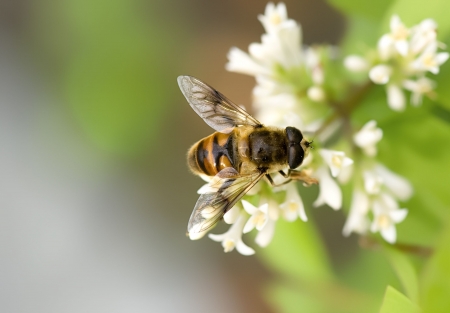Study Shows Importance of Landscape to Honey Bee Survival
December 11, 2019
We all know winters can be a very trying time for our honey bees. Once the customary pollination season is over, they are forced to live in their hives and survive off whatever honey is left behind for them. While some beekeepers will provide sugar-water for the bees, this is NOT healthy and some studies provide it does more harm than good. A recent study that was conducted in Iowa offers a bit more insight into this problem and why the overall landscape where bees are kept may be a significant culprit in the current honey bee crisis.
In carrying out the study, the researches observed honey bees during the traditional pollination season that were placed near soybean fields. During the summer months, the hives thrived. All of the hives grew in number and stored honey to get them through the winter months. As the season wore on, though, that started to change rather dramatically. In August, the researchers started to see the hives beginning to thin out. By October, the honey that was supposed get the hive through the winter was completely gone and the bees inside the hives looked malnourished.
In an effort to save the bees, the hives were moved to another area that had late-blooming prairie plants. After those hives were moved, they started to flourish again. Professor of Ecology, Evolution, and Organismal Biology at Iowa State, Amy Toth, explained. "We saw a feast or famine kind of dynamic happening, where in the middle of the summer the hives in ag fields were doing great. In fact, the hives in the most highly agricultural areas outcompeted hives in areas with less row-crop production. But then they all just crashed and burned at the end of the season.”
The overall conclusion of the study is that regularly farmed areas are a great source for a sort of buffet for the honey bees, however, they need a sustainable landscape in order to be able to thrive and survive throughout the winter. It is important to note they are NOT recommending beekeepers try to find a prairie to relocate their hives. What they are looking at, however, is reconstructing a prairie-like setting near fields that are vigorously farmed throughout the season.
It was also rather interesting in terms of the biological makeup of the bees depending upon the time of the season when they are born. Adam Dolezeal, a Professor of Entomology at Illinois University, stated, "As winter approaches, the last generations of bee larvae normally experience unique physiological changes that better prepare them for the harsh season. These bees have higher fat stores and their aging is slowed so they can get through the winter. But we found that the winter bees near soybean fields did not have the same level of fat stores."


.jpg)




